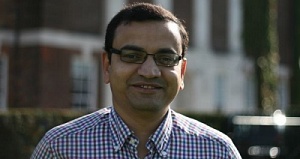Международный центр исследований развития человека приглашает студентов, магистрантов, аспирантов и молодых ученых и сотрудников Томского государственного университета на открытую лекцию (на английском языке) «Creativity: Through Advanced Brain Mapping and Stimulation» профессора Джойдипа Бхаттачаря (Joydeep Bhattacharya), Голдсмитс, Университет Лондона, Великобритания.
Лекция «Креативность. Комплексное картирование и стимулирование мозга» посвящена креативности как сложному когнитивному конструкту; многомерным нейронаучным подходам, позволяющим исследовать нейронные механизмы, лежащие в основе различных этапов креативного решения проблем; Ага! – моментам.
Дата и время: 20 декабря 2016 (вторник), 16.35-18.10
Место проведения: Томский государственный университет, Международный центр исследований развития человека, 4 корпус, ауд. 022 (конференц-зал).
Контактная информация: e-mail: icrhd@mail.ru; phone +7 (3822) 786 050
Больше о лекции на английском языке:
«Creativity: Through Advanced Brain Mapping and Stimulation»
Prof. Joydeep Bhattacharya FRSA, APS Fellow
Head, Brain & Cognition Cluster
Director, EEG Laboratory
Department of Psychology
Goldsmiths, University of London
Open Lecture «Creativity: Through Advanced Brain Mapping and Stimulation»
Abstract: Creativity is the driving force behind every progress in human civilization yet it is one of the least understood cognitive constructs. As it is complex and multifaceted, we need to have multi-measure neuroscientific approach in order to reveal the neuronal mechanisms underlying various stages of creative problem solving. Using a combination of neuroimaging techniques like ultra high field fMRI, high density EEG, I presented the neuronal trajectory of creative cognition. Specifically I will show that the insightful Aha! moments are linked to a sudden release of the neurotransmitter dopamine, and further there are distinct neural precursors to such Aha! moments. I will also discuss a computational model explaining the emergence of Aha! moments. Next I present some recent findings showing how brain stimulation can specifically benefit our creative thinking by overcoming persistent mental biases. Finally I will also present some latest data when brain stimulation can surprisingly inhibit some facilitatory effects of creativity training.


